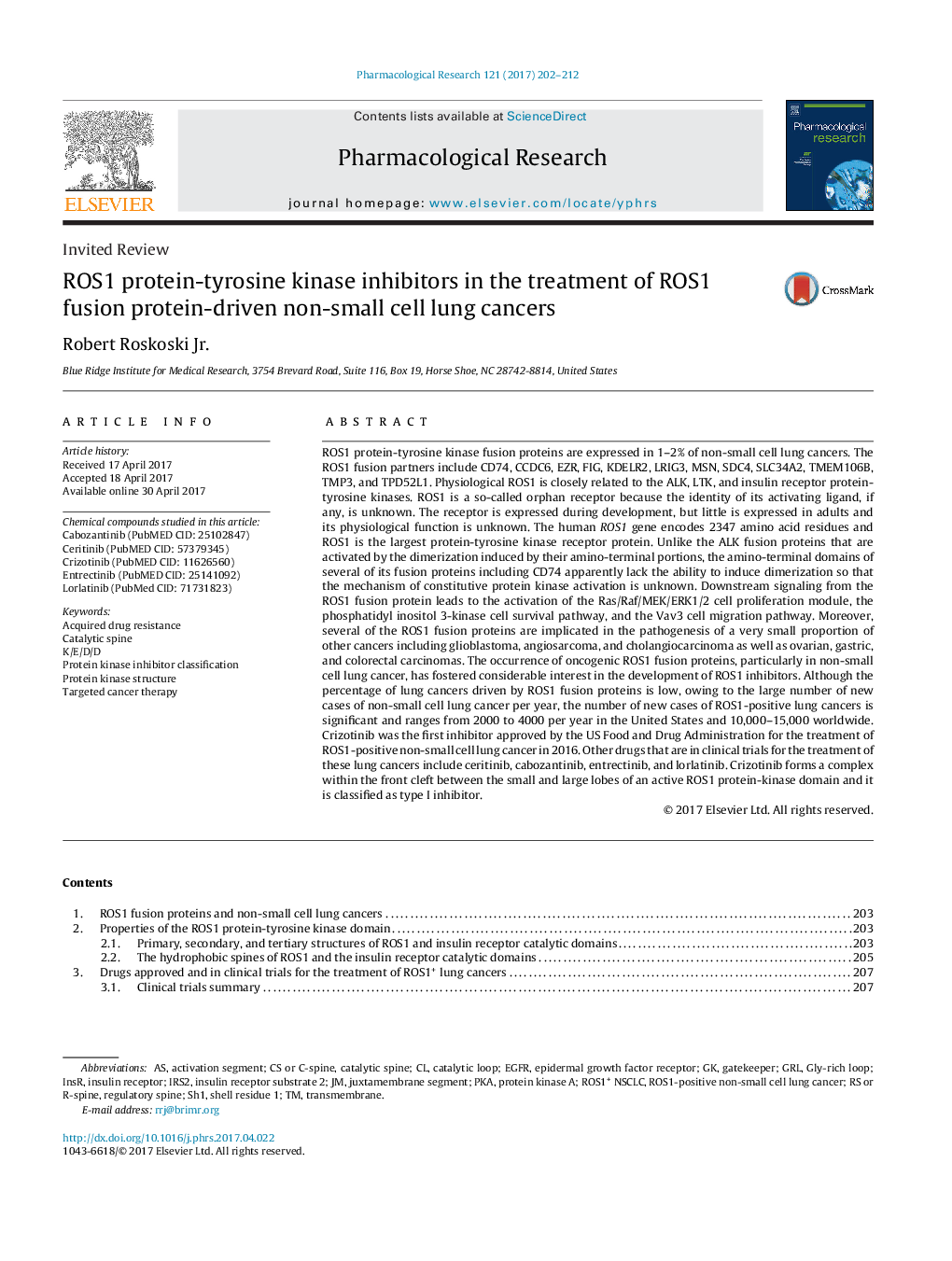| Article ID | Journal | Published Year | Pages | File Type |
|---|---|---|---|---|
| 5557269 | Pharmacological Research | 2017 | 11 Pages |
ROS1 protein-tyrosine kinase fusion proteins are expressed in 1-2% of non-small cell lung cancers. The ROS1 fusion partners include CD74, CCDC6, EZR, FIG, KDELR2, LRIG3, MSN, SDC4, SLC34A2, TMEM106B, TMP3, and TPD52L1. Physiological ROS1 is closely related to the ALK, LTK, and insulin receptor protein-tyrosine kinases. ROS1 is a so-called orphan receptor because the identity of its activating ligand, if any, is unknown. The receptor is expressed during development, but little is expressed in adults and its physiological function is unknown. The human ROS1 gene encodes 2347 amino acid residues and ROS1 is the largest protein-tyrosine kinase receptor protein. Unlike the ALK fusion proteins that are activated by the dimerization induced by their amino-terminal portions, the amino-terminal domains of several of its fusion proteins including CD74 apparently lack the ability to induce dimerization so that the mechanism of constitutive protein kinase activation is unknown. Downstream signaling from the ROS1 fusion protein leads to the activation of the Ras/Raf/MEK/ERK1/2 cell proliferation module, the phosphatidyl inositol 3-kinase cell survival pathway, and the Vav3 cell migration pathway. Moreover, several of the ROS1 fusion proteins are implicated in the pathogenesis of a very small proportion of other cancers including glioblastoma, angiosarcoma, and cholangiocarcinoma as well as ovarian, gastric, and colorectal carcinomas. The occurrence of oncogenic ROS1 fusion proteins, particularly in non-small cell lung cancer, has fostered considerable interest in the development of ROS1 inhibitors. Although the percentage of lung cancers driven by ROS1 fusion proteins is low, owing to the large number of new cases of non-small cell lung cancer per year, the number of new cases of ROS1-positive lung cancers is significant and ranges from 2000 to 4000 per year in the United States and 10,000-15,000 worldwide. Crizotinib was the first inhibitor approved by the US Food and Drug Administration for the treatment of ROS1-positive non-small cell lung cancer in 2016. Other drugs that are in clinical trials for the treatment of these lung cancers include ceritinib, cabozantinib, entrectinib, and lorlatinib. Crizotinib forms a complex within the front cleft between the small and large lobes of an active ROS1 protein-kinase domain and it is classified as type I inhibitor.
Graphical abstractDownload high-res image (189KB)Download full-size image
